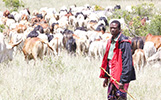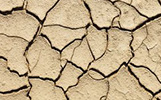| |  | | | Several countries have now undertaken full Life Cycle Assessments of their beef industries, and the latest one from Canada demonstrates the value of such exercises, while simultaneously showing the amount of progress that has been made by the industry in the last three decades.
GHG emissions is an area that is constantly raised as being a major source of environmental impact from the beef industry. The Canadian LCA demonstrates a 15% reduction in methane and 16% reduction in nitrous dioxide emissions over 30 years. These are very significant figures and excellent news for the industry.
| | |  | | | | Study Finds Canadian Farmers Cutting Emissions While Producing More
John Cotter, CTV News | January 11, 2016
Researchers at the University of Manitoba and Agriculture Canada found a 15 per cent reduction in methane emissions on a production basis between 1981 and 2011, and a 16 per cent cut in nitrous dioxide from manure. The results were achieved partly by feeding cattle grain instead of grass and other forage when they are being fattened before slaughter, says the study published in the journal Animal Production Science.
New Technology, Water Key to Feeding World
The Western Producer | January 14, 2016
The future of crop production in Canada depends on access to the latest technology to increase yields and productivity, but more importantly, a sustainable water supply is critical. A recent base line study by the World Wildlife Fund found that many of the Canada's watersheds are in trouble.
"We are observing a high degree of stress in many of our watersheds already, and in some cases that can reduce our ability to adapt to future changes," said James Snider, vice–president of the fresh water program at the World Wildlife Fund.
Sheep and Beef Farming Needs Practical Risk Takers to Remain Sustainable, Says Marlborough Farmer
Mike Watson, NZ Farmer | January 21, 2016
The agriculture industry, especially the sheep and beef farming sector, need people to manage risk and personal safety without being constrained, or burdened by bureaucracy, a Marlborough farmer says. Awatere Valley farmer Greg Harris said the industry had plenty of low points. "We all want to see prosperous regions and rural economies which encourage investment and add value to an industry which the country places pride in," he said. | | | |  | | | |
| Global News | |
| | It's been a unusual winter; extremely mild weather in Europe for the most part, with only the odd cold snap taking temperatures below freezing, while the UK saw extensive flooding and now the US counting the cost of severe winter storms. Our thoughts go out to those who have lost livestock as a result of these weather conditions.
With a strong El Niño continuing until the (northern) spring this year, we can expect continued dramatic weather events and the impact is likely to be felt keenly in marginal areas of the developing world where as I mentioned last time, the efficiency gap is widest (see Ethiopia story below).
GRSB will need to continue to focus our work in those areas to ensure that continuous improvement is being embraced wherever beef is produced, as sustainability does not only mitigate problems, it also helps the industry to adapt to changing circumstances.
 | | | | The Climate Case for Investing in African Livestock
The Guardian | December 11, 2015
There is growing recognition that customary institutions that characterise pastoralism, not least mobility of herders, offer a climate resilient production system for drylands that are increasingly dealing with climate change impacts like drought.
For the first time, a wide range of stakeholders are now coming together to find ways to expand opportunities for pastoralists. At Development and Climate Days, the organisation Pathways to Resilience in Semi–Arid Economies (Prise) brought together the private sector, government, civil society and researchers in discussions on unlocking the economic potential of livestock systems for climate resilience with a high–level panel on climate–resilient growth in the drylands.
Blizzard Recovery: After The Storm
John Maday, Ag Web | January 15, 2016
The winter storm "Goliath" that swept across the Southern Plains in late December killed, by some estimates, as many as 40,000 dairy cattle and 13,000 beef cattle, with thousands more missing in the weeks following the storm. As of mid–January, total death–loss numbers remained unclear.
As devastating as those immediate losses are, veterinarians and producers are expecting animal–health problems associated with the storm to persist for months.
Farm Foundation Reports on Antibiotic Workshops
John Maday, Drovers CattleNetwork | January 21, 2016
Ongoing education will be critical for livestock producers and veterinarians to adapt to upcoming changes in rules governing antibiotic use in animals. That message dominated a new report Farm Foundation presented during a summit this week in Washington, DC.
Can COOL Be Voluntary? Canada Says 'No'
Angela Bowman, Drovers CattleNetwork | January 19, 2016
The battle over COOL between the U.S. and its North Americans neighbors came to a head in early December after the World Trade Organization ruled Canada and Mexico could impose tariffs worth $1 billion on U.S.–traded products as retaliation over COOL.
Congress went on to repeal COOL in mid–December before these retaliations could be put into place. View 36–second video interview here.
Beef Consumers 'Trading Up' in Response to Higher Prices
Beef Central | January 18, 2016
Consumers have responded to rising beef prices in recent years by becoming more discriminating on quality, an analysis by US animal science professor Daryl Tatum suggests.
What's Ahead for the Beef Industry in 2016? 10 Megatrends to Watch
Burt Rutherford, BEEF Magazine | December 7, 2016
We will remember 2015 as the second–best year ever for cow–calf profitability, with 2014 notching the record. What's ahead for 2016? Here, in no particular order, are the top 10 megatrends to watch.
- Cow herd growth.
- Expansion challenges.
- Cattle price adjustment.
- Increasing economic volatility.
- Focus on options to antibiotics.
- Focus on government and regulation.
- Philosophical divide among cattlemen.
- Continued push for value–based calf marketing.
- Continued reliance on global markets.
- Retailer, consumer demands.
Meat Scientist Questions Beta–Agonists' Impact on Beef Quality
The Cattle Site | January 21, 2016
Dr Wayne Vanderwert, a Missouri cattle producer with a PhD in Meat Science, said while he has no concerns about beta–agonists from a food safety standpoint, he is concerned about beta–agonists' impact on meat quality. "First, there's reduced palatability, so there's less consumer satisfaction and that costs the industry a lot of money. There's also less consumer confidence in our industry because we tend to use these products and the consumer would rather we didn't," he said.
Ethiopia Faces El Niño Emergency as Livestock, Crops Lost
The Cattle Site | January 20, 2016
The strongest El Niño weather episode in the last several decades hascaused repeated crop failure, decimated livestock herds and driven some 10.2 million people across Ethiopia into food insecurity, the UN's Food and Agriculture Organisation (FAO). "Continued drought throughout the beginning of 2016 also means pasture will become even more scarce, which will negatively impact livestock keepers that rely on those grazing lands and water points for their food security," said Amadou Allahoury, FAO Representative for Ethiopia.
Satellite Data Helps Australian Ranchers Meet the Rising Demand for Meat in a Changing World
Phys.org | January 14, 2016
When Russell Lethbridge walks his property in northern Australia—kicking–up clouds of dust that catch the sunlight as he assesses the grasses, shrubs and brush that fill the landscape with muted tones of green—he carries the legacy of five generations before him on his shoulders. "Werrington Station has been in our family for 117 years," Lethbridge said.Lethbridge turned to the Natural Resource Management Spatial Hub—a collaboration of more than 20 Australian federal and state agencies, research and industry organizations—which provides on–demand access to digital property maps using NASA's Landsat and MODIS data. In the case of both Landsat and MODIS, these data consist of moderate–resolution groundcover images. Depending on cloudcover, new Landsat images of Lethbridge's property are available as often as every 16 days.
With MODIS—an instrument aboard the Aqua and Terra satellites—new images are available every one to two days as long as clouds don't block the view, allowing land managers to track broad changes in land cover on a regular basis and in near real–time. | | | | |
| | | Administrative Offices:
13570 Meadowgrass Drive, Suite 201
Colorado Springs, CO 80921 USA | | Phone: 1-719-355-2935
Fax: 1-719-538-8847
Email: admin@grsbeef.org | | | |  | | | | Copyright © 2016 Global Roundtable for Sustainable Beef. All rights reserved.
You are receiving this message as a benefit of membership to the Global Roundtable for Sustainable Beef | | | |  | | | |
| | | | | |
